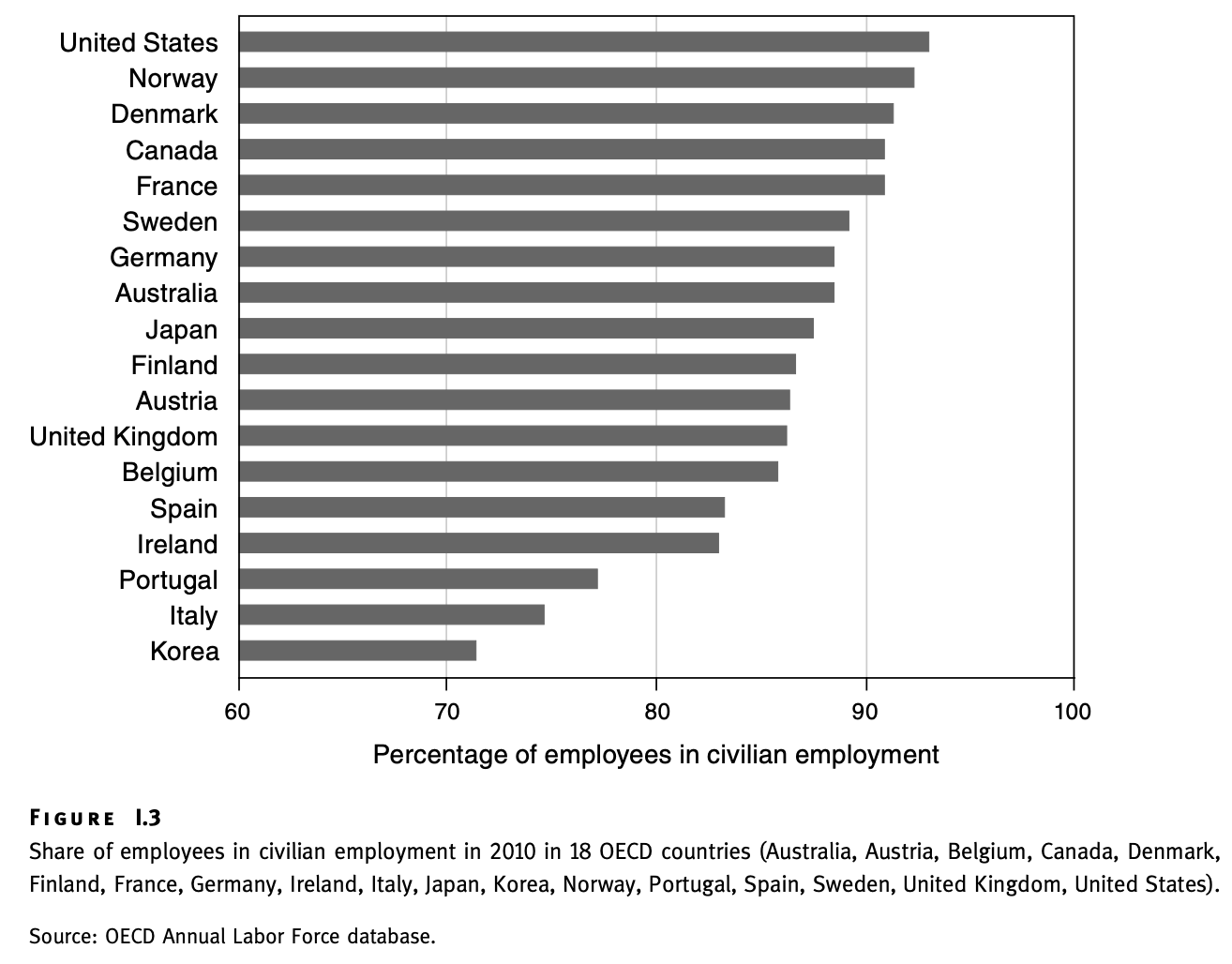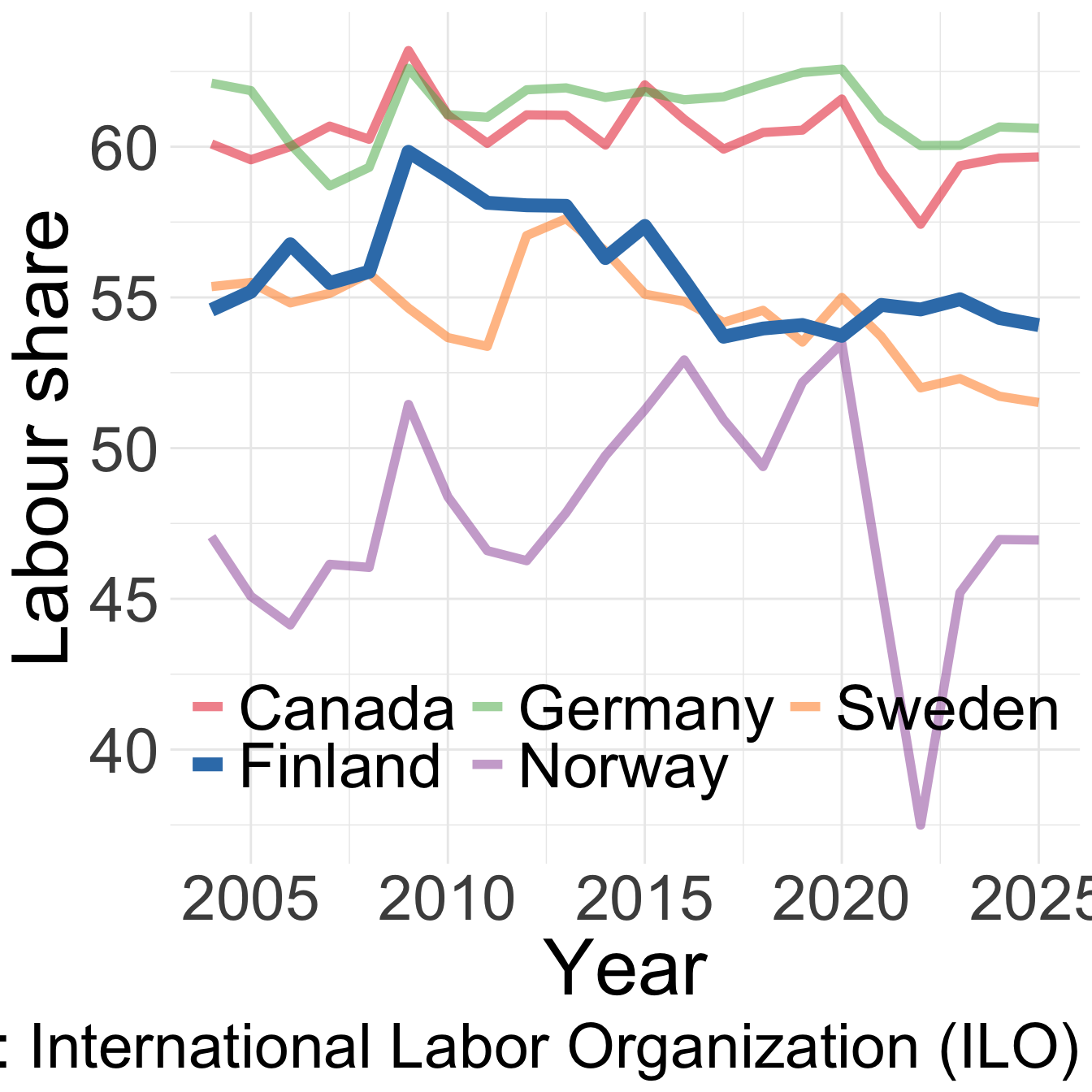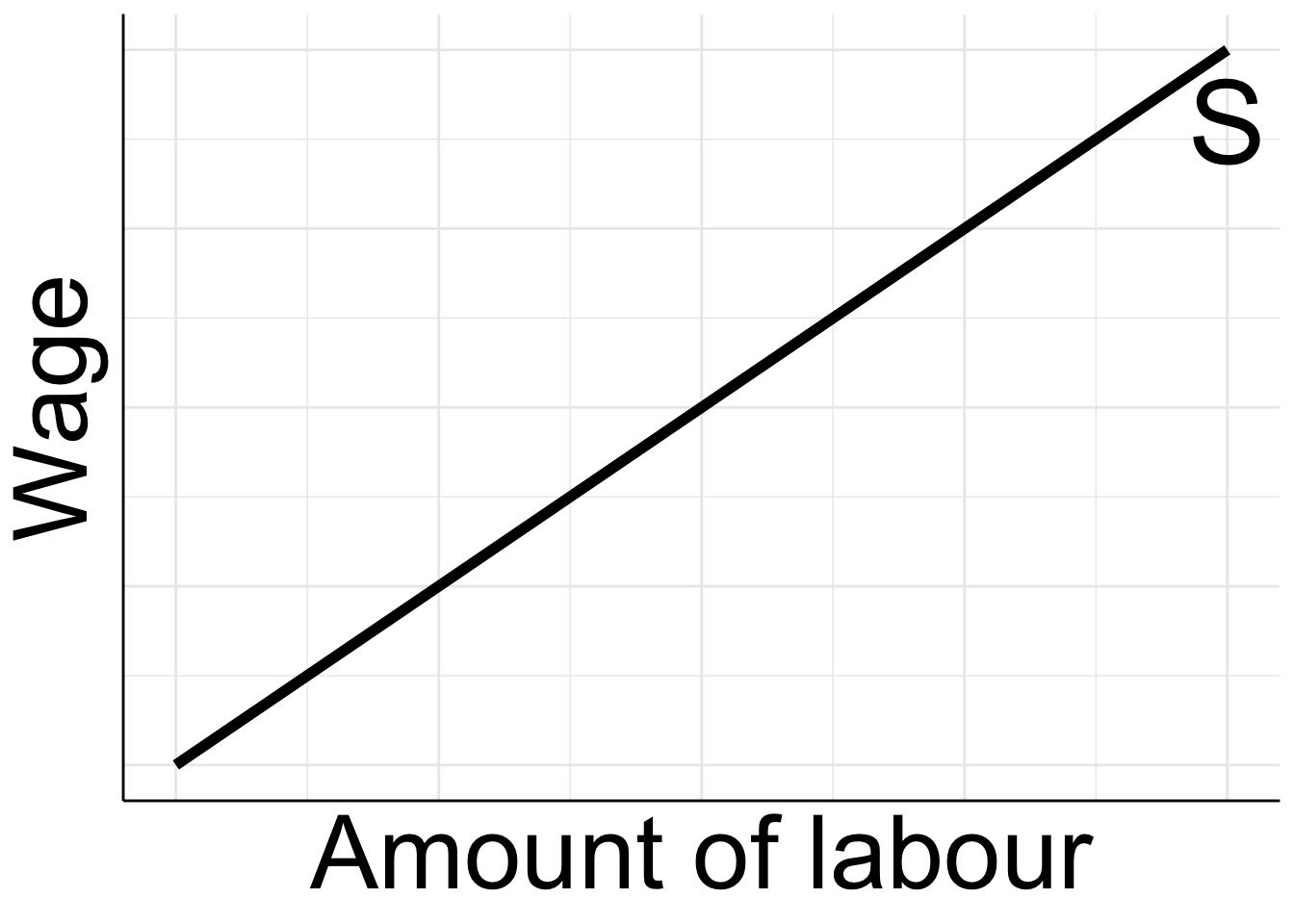
1. Introduction to Labour Economics
KAT.TAL.322 Advanced Course in Labour Economics
Course structure
Instructor: Nurfatima Jandarova (nurfatima.jandarova@tuni.fi)
Classes: 90 min lectures twice a week:
- Mon 12:00 - 14:00
- Wed 10:00 - 12:00
Check classrooms on Sisu calendar!
10 lectures + 2-3 classes devoted to final assessment
All course information on Moodle
No office hours (contact by email)
Final assessment
20 min presentation of a research proposal
Individual or in groups of 2-3 students
Topic related to labour economics
- Reading list is a good place to start
- Recent literature surveys (e.g., Journal of Economic Literature)
- Opinion columns (e.g., VoxEU)
- Labour economics
Requirements to research proposals
Research question and relevance
A very specific research question
Important for overall society
- How answering your research question can improve our lives?
Aims at novel evidence and understanding of the problem
- The question may be “old”, but studied from a new angle
The research question (RQ) should be very specific!
- Generic form of RQ is “How does X affect Y?”
- Make sure that X and Y are very specific concepts.
- An example of a vague RQ is “How does reduction in benefits affect students?”
- Trying to answer this question can quickly become overwhelming. There may be different types of benefits that students receive, each with different amounts and different conditions. There are, definitely, myriads of student outcomes: do they work while studying, what kind of grades they receive, how many classes they attend, how they fare in exams, do they do summer internships, do they change fields or universities, what kind of jobs they find after graduating, how fast do they find jobs after graduating, etc.
- Typically, when we start thinking about the topic, we all start from a general question like the one in the example. You can definitely make it more specific by trying to narrow down X and Y as much as possible.
- A more specific version of RQ in the example could be “How does reduction in housing allowance affect graduation timing of students?” or even better “How does the transition from housing allowance to housing supplement affect graduation timing of students?”
- When you formulate a sufficiently specific research question, it makes the following steps much easier to think about!
In addition to being specific, research question should be relevant!
- You are expected to demonstrate the importance of the particular question to the overall society.
- Why answering your RQ is important? How could the society benefit from the answer?
- For example, the importance may be measured in monetary terms. In the example with housing allowance, the government enjoys immediate benefit in form of reduced spending, but may suffer in the future if students don’t graduate on time or drop out of universities, and subsequently, have lower earnings. Lower earnings means that government would receive lower tax revenues. You can demonstrate the relevance of this tradeoff by computing share of housing allowance in total government spending vs share of income tax of university graduates in total government revenue.
- The importance may also be measured in the proportion of population affected by the issue of interest. For example, if you want to study gender pay gap, you can use the argument that women constitute half of labour force. So, by lowering the gender pay gap, the total income in the economy could considerably go up.
- By and large, there is no specific model to follow. Think about why you are interested in this question, why other people might be interested in this question, how it can improve our lives.
It should also be novel!
- A RQ that has already been definitively answered in the existing literature is not novel.
- However, you can use past research papers for your proposal project. In this case, you must justify the necessity for re-evaluation.
- For example, a new data with previously unavailable key variable is published which would allow for a more direct or precise estimates.
- Or there was a similar policy change but in opposite direction (like tax cuts or tax raises), so there is a question if economic agents react symmetrically.
- Or population characteristics have changed since that paper was published in a way that underlying model assumptions may have changed. For example, you want to compare effectiveness of offline and online job posts and the most recent paper to look into it used data from early 2000s. You may argue that internet penetration has increased significantly since then and that it changes the relative cost and benefit parameters of each channel of job search.
- It is unacceptable to copy an existing paper without making or justifying any changes.
Requirements to research proposals
Main body
Theoretical model
- Clear exposition of model
- Comparative statics/predictions
- ⭐ Plan for testing with the data
Empirical strategy
- Potential dataset (sample, variables)
- Estimation method (challenges, assumptions)
- ⭐ Interpret through the lens of model
You are free to propose either a model or estimation plan.
If you choose theoretical model, you need to provide a very clear exposition of the model.
- who is an agent making a decision
- what kind of information she observes
- what decisions does she make
- what are the constraints she is facing
You should also provide some simple analysis of the model.
- How can optimal decision making rules be characterised?
- Comparative statics (either directly or using implicit function differentiation)
- If the model you set up is very complex, having nice-looking solutions might be impossible. But do provide the analysis to the best of your abilities.
For the bonus point, you could also outline plan for testing model predictions in the data.
If you choose empirical strategy, you need to provide a very clear discussion of data and estimation methods.
- What kind of data is available that would allow you to study this question?
- What part of the population is covered in that data? How does that affect your analysis?
- What kind of relevant variables are available in the data? Do they measure quantity of interest directly? What transformations you need to apply to the variables? How could these transformations affect your analysis?
- What estimation method you propose to use? Why do you think this method is suitable to answer the question?
- What are necessary assumption for this method to work? Do you think these assumptions are met in the data? How could you verify that these assumptions are valid?
For the bonus point, you could discuss how the estimation results may fit into a relevant economic model.
Find a paper with similar model or method and follow their logic.
Useful resources
- How to apply economics to everyday questions
- Not about giving correct answers!
Labour Economics
What is Labour Economics?
Labour economics studies how labour markets work.
Main actors in the labour market:
workers (sellers)
firms (buyers)
government
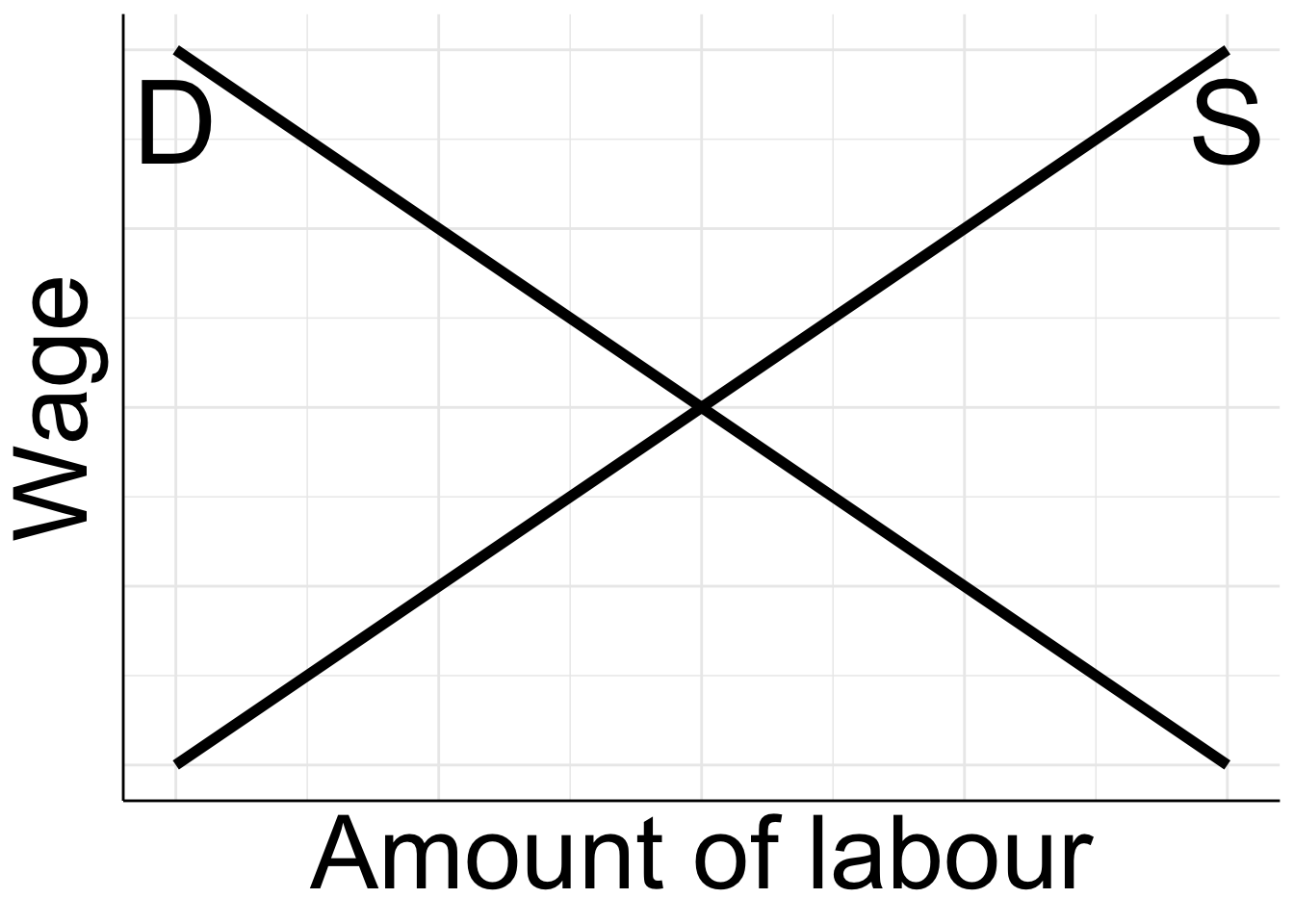
Why study Labour Economics?
Labour market is the largest market
- Work accounts for ~30% of waking hours
- Employees account for 70-90% of employment
- Labour income accounts for ~60% of total output
- Labour market is the largest market in the economy.
- We spend considerable amount of time every day on work-related activities.
- Most of us earn their living either by working for an employer or by doing own business.
- The type of work we do, the skills we invest in - all determine how much we earn.
- Our income obviously matters for our consumption, for our leisure etc.
- But work can also affect our well-being in other ways: health, networks, etc.
- All of these factors are inter-related: our work can affect our well-being and expected change in well-being can also affect our work decisions.
- Besides importance directly on us, our work-life decisions can affect people around us.
- If your parents lose jobs while you are still young, you may decide to start working sooner rather than study.
- If you lose a job, but you don’t have financial assistance of the public sector or family, you may need to accept a crappy job.
- Your work decisions can also affect your choice of spouse or a decision to start a family.
- The way that labour markets work can also affect whether wealth is concentrated in certain families across generations.
Positive vs Normative Economics (do vs should)
Since topics in labour economics affect many aspects of our lives, the difference between positive and normative statements arise all the time.
You might have already encountered these concepts earlier. Positive economics typically answers question “How do markets work?”. Normative economics - “How should markets work?”. Both types of questions are important and have their purpose.
Before we can make any changes in the hope of improving what already exists, we need to understand how people make decisions. The concept of tradeoff is central to economics. And so with many questions there is no clear expected answer. If tuition fee is raised, then students from low-income families would be unable to finance their education. However, if higher tuition revenue is invested into improving quality of education, then students may enjoy higher earnings in the future. In the end, whether we see negative, positive or no effect, depends on the strength of these opposing forces. Therefore, understanding them is the first crucial step and is the main focus of this course.
Once we understand how a particular market works, we might want to propose a change that should improve well-being of people in the society. For example, if you find that raising tuition fee actually benefits students’ future earnings more than you might suggest that tuition fees in all universities should be raised. But in that case, the economy will be flooded with higher-quality graduates and their relative wages might actually decrease. Would the new equilibrium still be favourable to the society? These kinds of questions require a different type of research methodology to be answered properly.
Topics in labour economics
Although work decisions are at the centre of labour economics, the topics covered by labour economics are multi-faceted.
What topics can you think of that are related to labour economics?
Example: labour supply
Female labour force participation
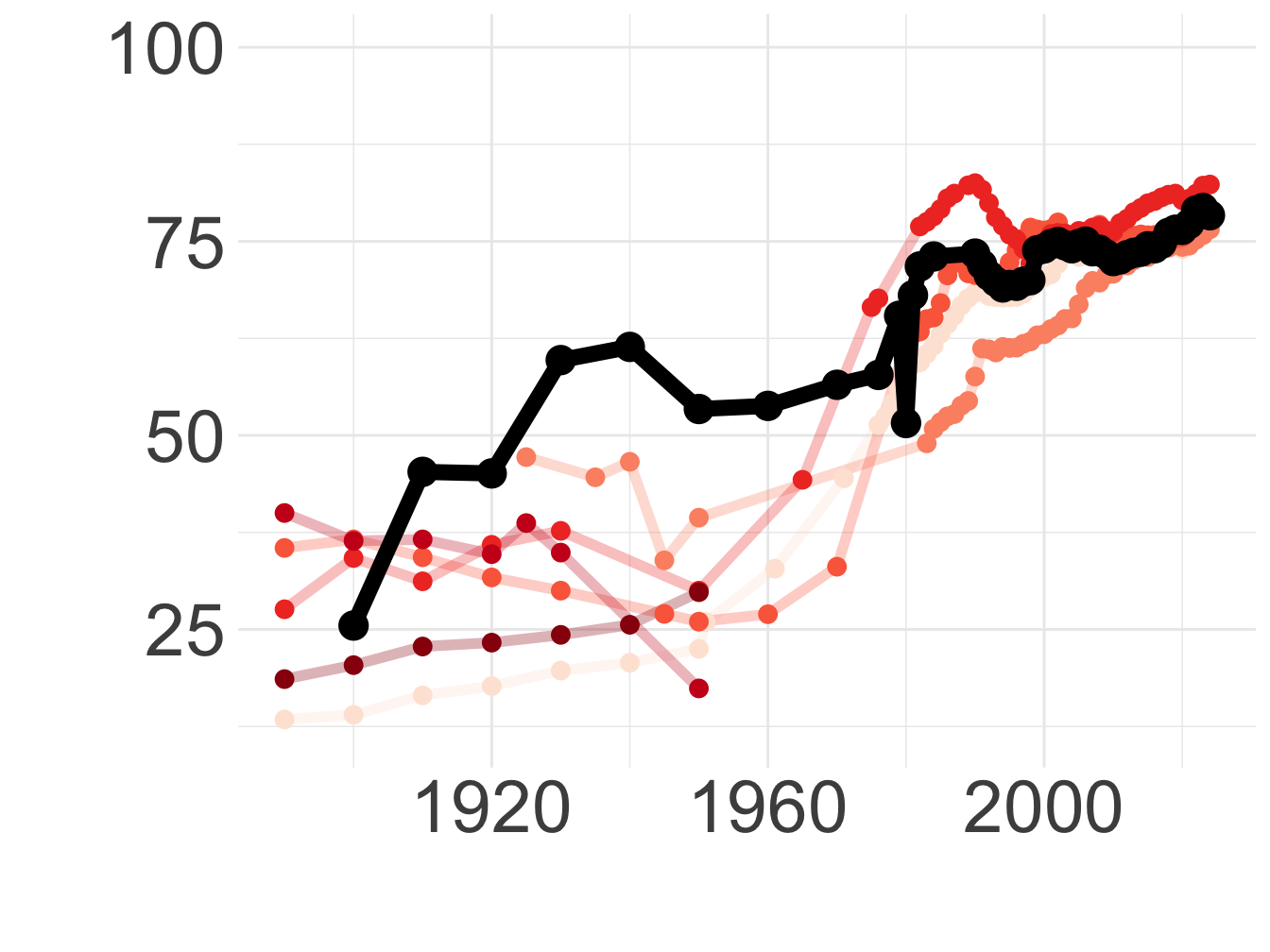
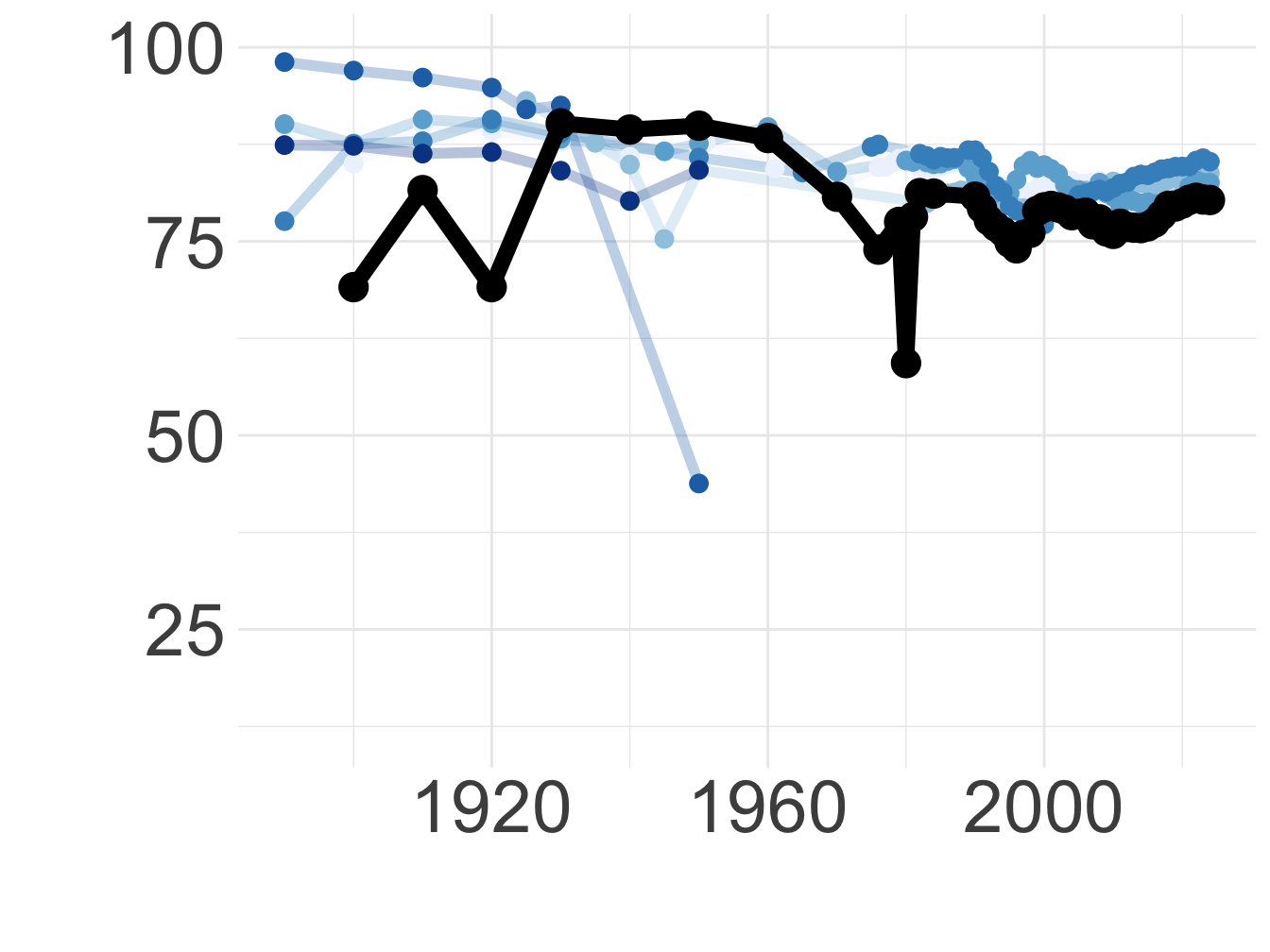
Source: International Labor Organization (ILO) and Olivetti (2013)
XX century saw a marked rise in female labour force participation: from around 25% in 1900 to 75% nowadays.
You can look at this picture and think about many different questions.
- Yes, many countries looked to women for labour force during WWI and WWII. But why did it not drop back to pre-war times?
- Does technological advancement play a role that expanded set of occupations accessible to women?
- Now that women participate equally in the labour force, what happens to home production and child rearing?
- Men’s labour force participation shrank a little bit from nearly 100% to also about 75%. Are they worse off or better off with lower labour force participation?
- How this expansion in labour supply changed the nature of jobs? Do women do same type of jobs as men do?
- Despite equal participation, women still get paid less. Why does it persist?
- Now that every child sees a working woman growing up, how did their culture norms change? Can these culture norms change workplaces of the future?
Is there a question that interests you related to gender in the labour market?
Example: labour demand
Computerisation and automation
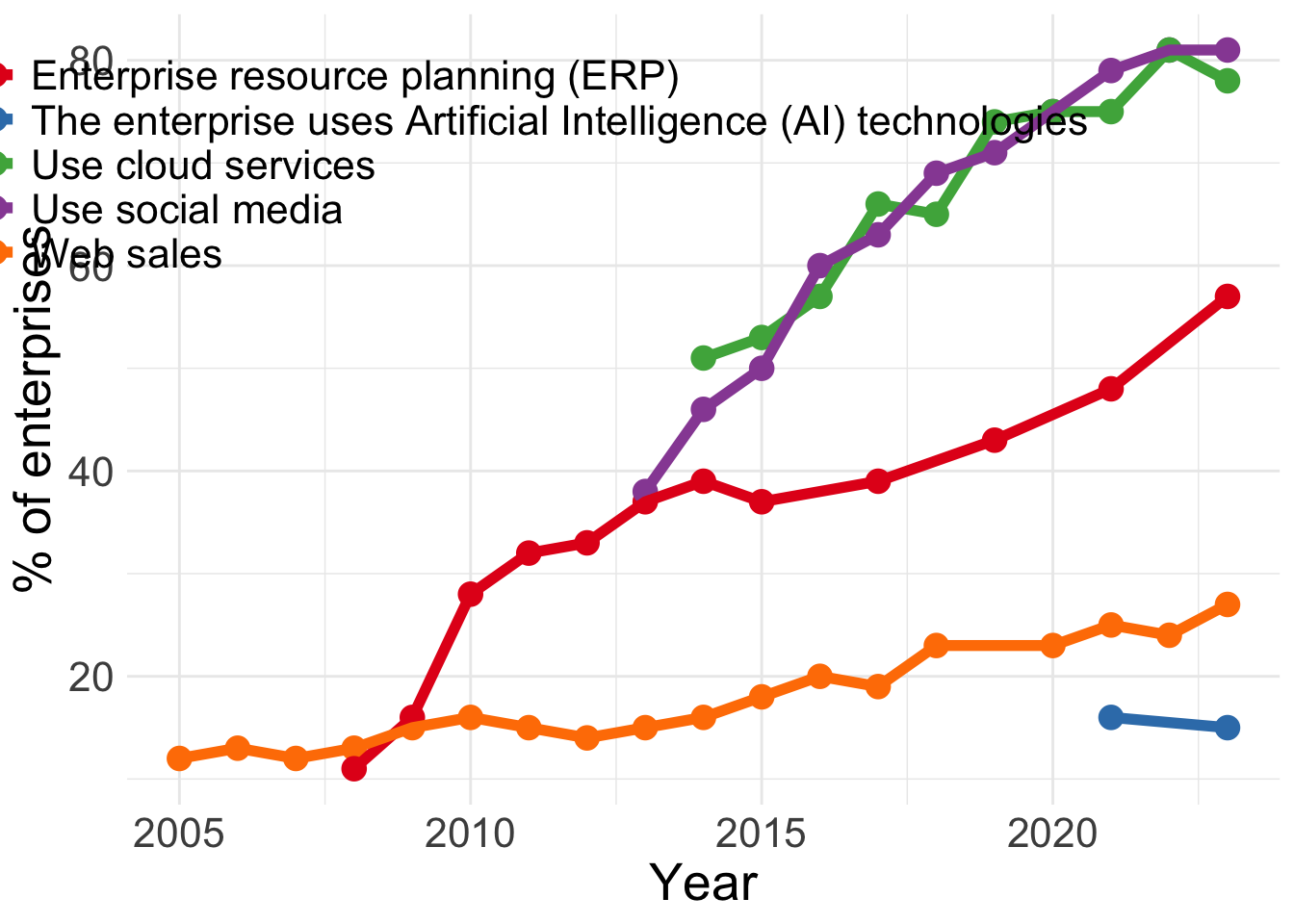
Source: Statistics Finland (2024)
Example: labour demand
50% of jobs face high risk of computerisation

There is no question that computers and algorithms capturing larger and larger share of activities that we normally do. It is difficult to imagine a modern workplace without a computer or internet access. Many workplaces simply vanish and are replaced by apps matching individual buyers and suppliers. People can successfully earn their living on social media.
How does all this change the landscape of jobs and labour demand?
- Hot question of recent years: will AI actually kick people out of workplaces and condemn them to joblessness and poverty?
- Will job postings require an ever-more increasing experience and skills?
- Do these trends kill small local firms and result in few big chains dominating the product and labour markets?
- How would wages change in response to higher automation?
What kind of questions do you find interesting in the relationship between technological advancement and labour markets?
Example: employment
Minimum wages
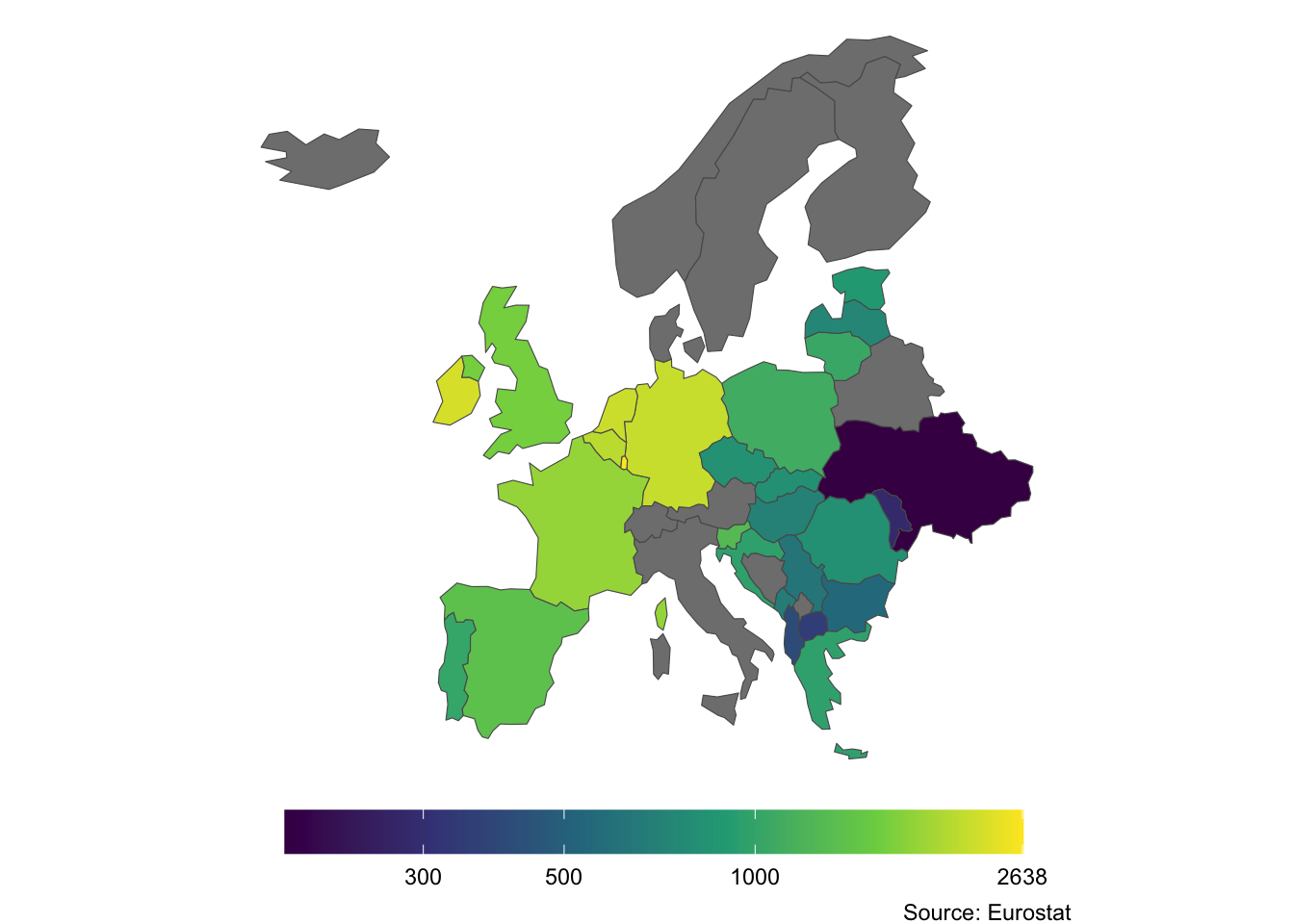
The two sides of the market respond differently to wages. Workers benefit from high wages, firms benefit from low wages. The equilibrium wage in the market equates these two forces and delivers optimal employment.
But this is in theory with perfect competition and no market failure. The real world is often far from perfect competition. The power imbalance between firms and workers might result in market wages being too low. So, many countries have a policy of minimum wage in place.
But at what is the optimal level of minimum wage? There is clearly a lot of variation between the countries. There may be a lot of variation within countries, by regions or industries, for example.
What happens if minimum wages are raised? How responsive is labour demand to minimum wage changes? How responsive is labour supply? Do workers or firms change any other aspect of jobs besides quantity of employment? For example, do workers shirk more when minimum wages are higher? Do firms expand the range of tasks of the job?
Why do some countries not have a minimum wage in place? Would they benefit from having a minimum wage?
Example: human capital
University expansion
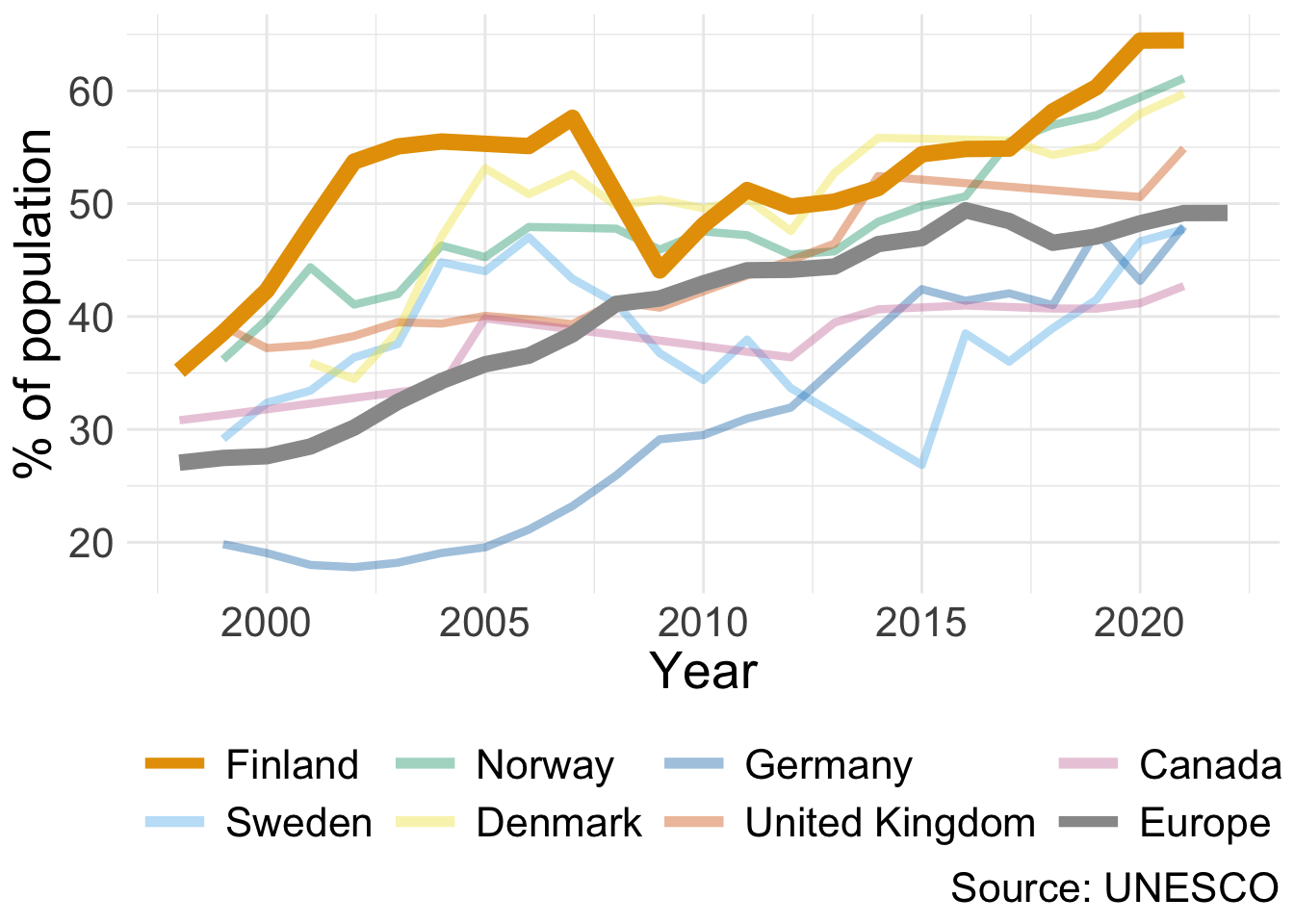
Another big change that occured in XX century is expansion of education at all levels. Share of population with a university degree rose from around 30% to 50-60% in the last 20 years alone!
- People must be getting post-compulsory education because they think that it is beneficial. What is quantitative measure of this benefit? Did it change over time (become less profitable)?
- Educating ever increasing number of people takes a lot of effort and resources. How should it be financed - from public funds or by an individual?
- How do universities select students? Is average level of applicants higher or do they lower the admission standards?
- Does education alleviate or propagate income inequality?
- Are people getting too much education? Are workers over-qualified for their jobs?
- Is all education equal? Do some fields pay off better than others? Do elite schools really enhance knowledge of their students or they “skim the cream” from the population of all students?
- Human capital is not only about education and includes other characteristics, such as health. Education is positively correlated with health of people. Which way the direction goes? Does it affect the composition of jobs, firms and workers?
What other topics related to human capital do you find interesting?
Example: inequality

Another well-known trend is the rise in income inequality since 1970s-80s. This rise in inequality can be observed in many places, including in Nordic countries. And this is not only an increase in variance of inequality in the population, it is that rich people get even richer and poor people get even more poor.
How does this inequality affect labour market structure? Do people at the top and bottom of the distribution participate in the labour market? If so, in what role? What kind of jobs they do?
People at the top of the distribution more likely to be business owners. And they have considerable resources to affect local or national policies. How do these change the institutions? Can these affect future labour force?
On the other hand, perfect equality is undesirable because people then lose incentives to invest into their skills, innovate, etc. But how much of inequality is optimal? Why it is higher in some places and lower in other?
What other questions related to inequality you might be interested in?
Podcast on inequality: https://ifs.org.uk/articles/when-and-why-should-we-care-about-inequality

